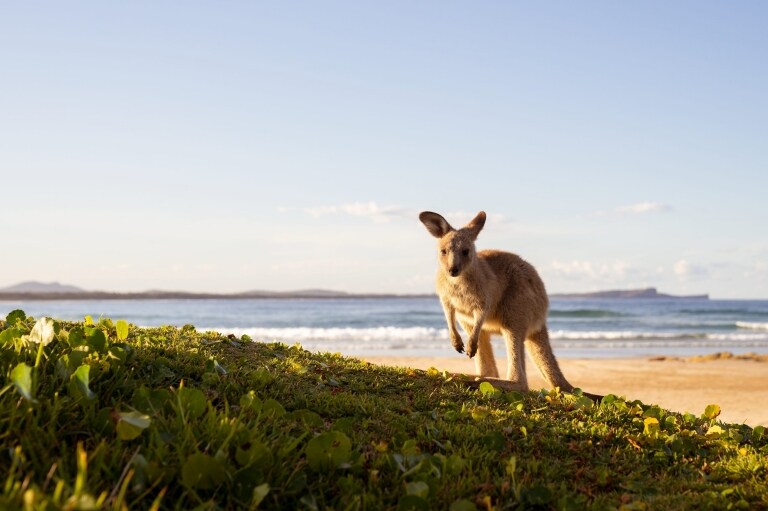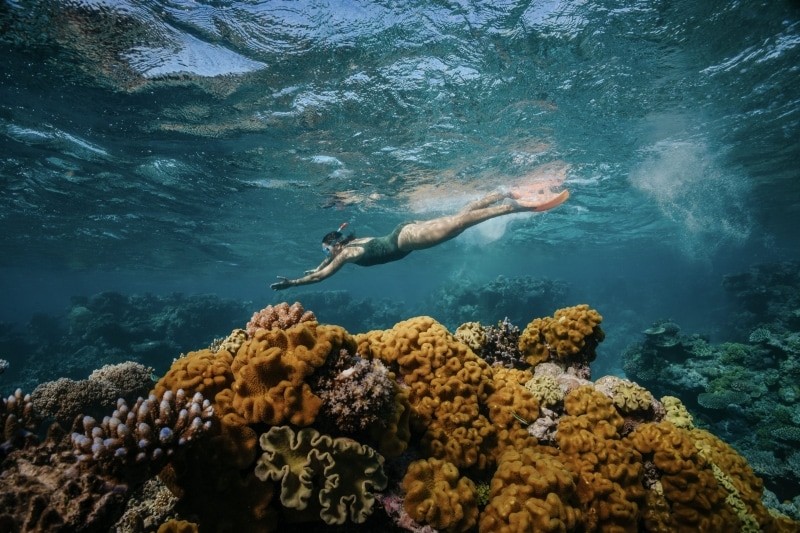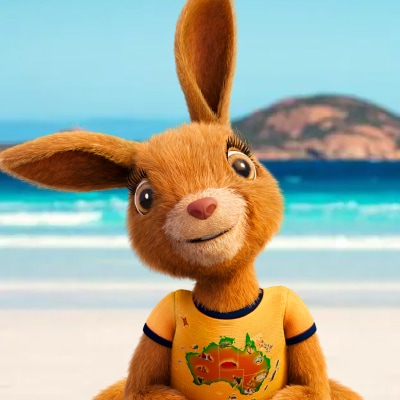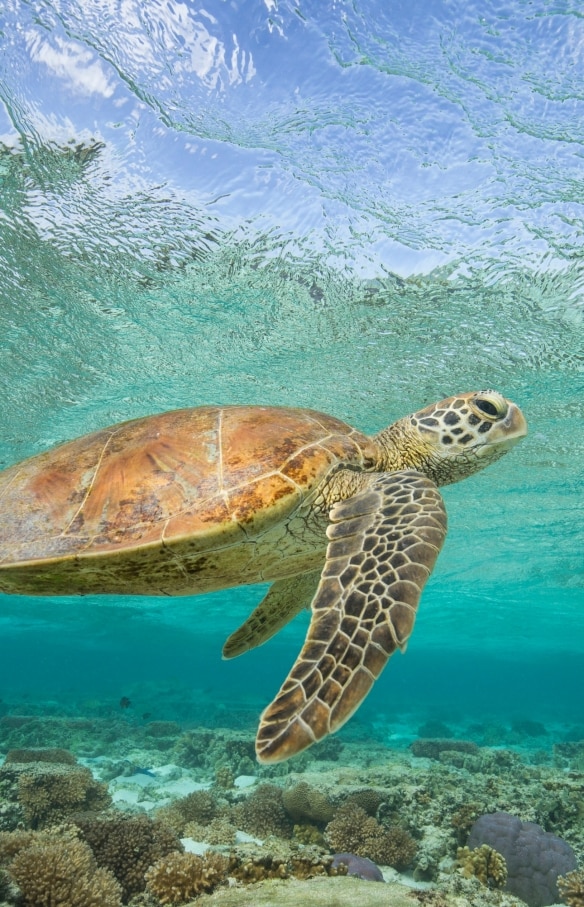
Diamond Head Beach, Crowdy Bay National Park, New South Wales © Tourism Australia
8 ways to be a conscious traveller in Australia
How to explore the best Australia has to offer – without leaving a heavy carbon footprint.
Close encounters of the ethical kind
Close encounters of the ethical kind
Australia loves its wildlife, which is incredibly unique. Here, you can encounter everything from kangaroos to whale sharks with experiences that support conservation. On Ningaloo Reef, a portion of the cost of swimming with whale sharks goes into the conservation of these marine giants. At Mon Repos on Australia’s east coast, the fee to witness nesting and hatching sea turtles goes towards researching and protecting the species at the Mon Repos Turtle Centre.
Think local, buy local
Think local, buy local
How and where you spend your money can make a big difference to small communities. Using your tourist dollar to buy from small businesses and local shops means you’ll go home with authentic souvenirs of your time in Australia. If you plan to invest in Aboriginal and Torres Strait Islander art, shop in a reputable gallery and ensure the piece you’re buying benefits the artist and community from which it came. The Indigenous Art Code offers a helpful guide.
Eat well, do good
Eat well, do good
Chefs in Australia are leading the way in sustainable cuisine, drawing from Australia’s abundance of fresh ingredients grown around the country. Many restaurants have an on-site garden so that produce doesn’t need to be shipped, while others take a ‘nose-to-tail’ approach that reduces food waste. More and more eateries are peppering their menus with native ingredients, putting culture and flavour at the fore.
Help out a mate, or a couple of thousand
Help out a mate, or a couple of thousand
The Take 3 for the Sea initiative encourages beach-goers to collect and dispose of three pieces of litter when they leave the beach. Another way to help is by taking part in The Great Reef Census. This program gathers tens of thousands of images and timely reef data to support ongoing reef protection. To explore more options, such as caring for baby kangaroos, check out Conservation Volunteers Australia, Oceans 2 Earth Volunteers, WWOOF Australia and Go Volunteer.
Support the world’s oldest living culture
Support the world’s oldest living culture
Australia’s First Nations Peoples are diverse, with different languages, Creation stories, customs and ways of living with the land. By taking an Aboriginal-owned and led tour, you support both culture and community. Around the country, Aboriginal and Torres Strait Islander people welcome visitors to learn about Country, culture and history during incredible, immersive experiences that will leave you thinking a little differently.
Opt for eco-certified experiences
Opt for eco-certified experiences
Joining a locally-run tour offers invaluable insights, local perspectives and a weight off your planning shoulders. Even better, Australia has an abundance of eco-certified tours and attractions that promise a serious commitment to sustainability while providing premium nature-based experiences. For extra green points, venture to an eco-certified destination. In 2023, Australia named eight new eco-destinations, alongside Port Douglas.
Carbon-offset your flight
Carbon-offset your flight
To counteract some of the environmental effects of air travel, you can offset your flight. The modest fee you pay on top of your airfare is used by the airline to invest in carbon offset programs. These programs help to remove carbon dioxide from the atmosphere by either planting trees or protecting existing forests. They also invest in renewable energy and fire abatement projects.
Consider sustainable stays
Consider sustainable stays
An easy way to reduce your carbon footprint is by choosing eco-friendly accommodation. As an increasing amount of travellers seek connection to nature and sustainable alternatives, Australia has seen an ever-growing collection of eco-friendly stays emerge on the scene. From glamping experiences to luxury cabins and beach-side campsites, you’ll find a spectacular sustainable stay for every budget in Australia.



























































































































































